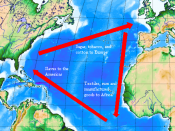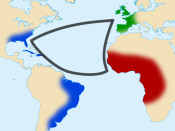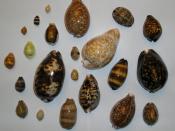Analyze the role of slavery and Triangular trade in the Colonial mercantile structure and for the primitive accumulation of Capital that allowed the take off of Capitalism?
The slave trade originated in a shortage of labor in the New World. The first slaves used were Native American people, but they were not numerous enough and were being decimated by European cruelty and diseases. It was also impossible to convince enough Europeans to migrate to the colonies, despite attempts to distribute free land. Massive amounts of labor were needed for mining, but especially for the plantations, in the labor-intensive growing, harvesting and processing of sugar, cotton and other tropical crops which could not be grown profitably in Europe. Growing sugar was an extremely labor intensive process. To meet this demand for labor European traders thus turned to Africa as a source of slaves. (Blackburn)
From the outset, relations between Europe and Africa were economic.
Portuguese merchants traded with Africans from trading posts they set up along the coast. "In 1492, Christopher Columbus discovered for Europe a 'New World'. It marked the beginning of a triangular trade between Africa, Europe and the New World. The Atlantic slave trade was organized in three legs, hence the phrase "triangular trade". Ships left Europe, usually with three kinds of commodity: weapons, strong spirits, and cheap trade items such as beads which were bartered for slaves. On arrival in the Caribbean or the Americas, slaves were auctioned off. On the third leg, the same ships took back to Europe, whatever the planters had produced usually sugar and rum, cotton, tobacco, cocoa, coffee." (Blackburn) The triangular Atlantic trade was probably the most important and profitable trading route in the world. The value of this trade route was that a ship could make a substantial profit on each...


